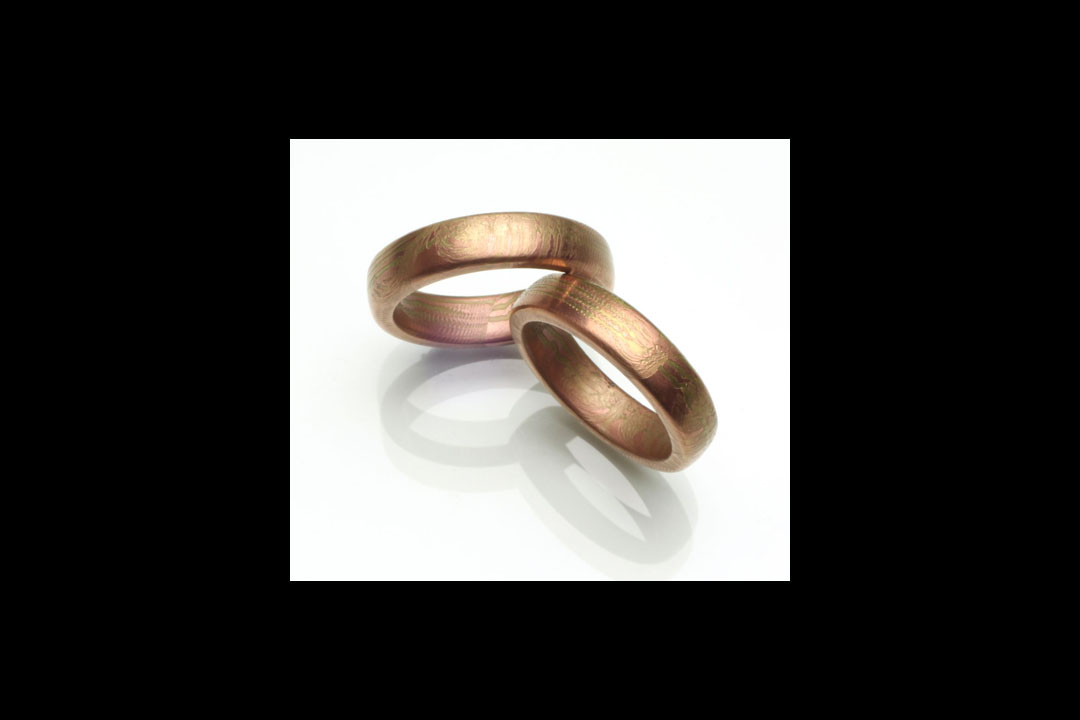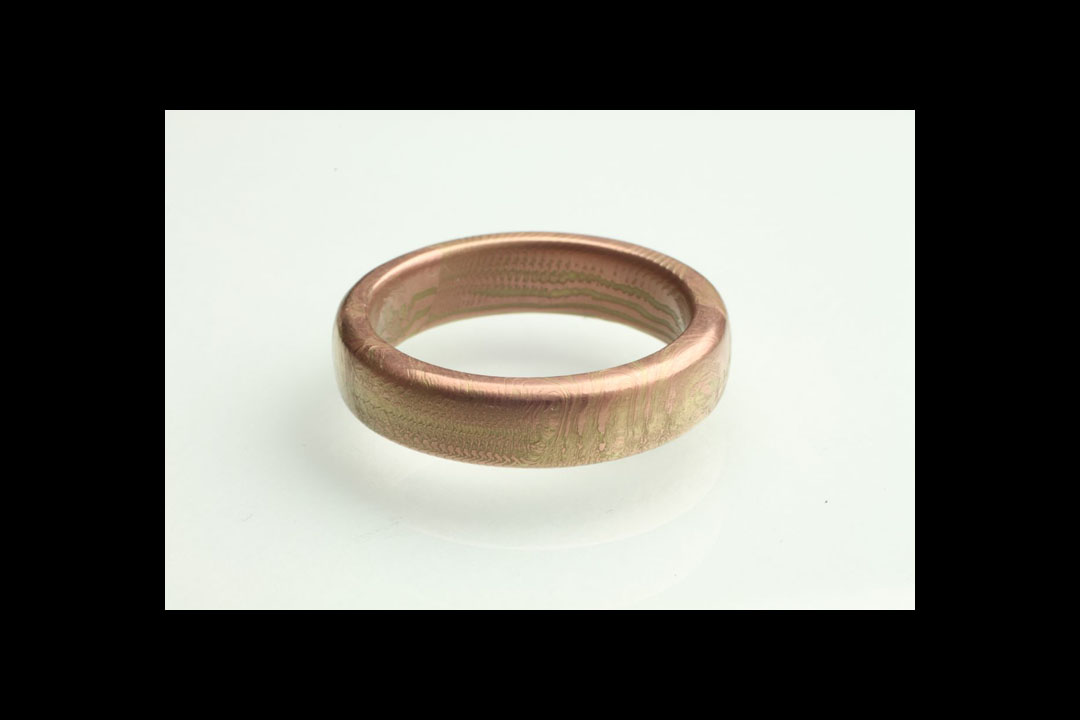Friction stirred mokume gane
Research Centre
Art and Design Research Centre
Date
07/2012
A novel method for producing mixed precious metal layered materials
Mokume gane is a high value, decorative laminate material used in the jewellery industry. Production of mokume gane is difficult and expensive at both small scale and industrial levels. This research investigates a novel method for producing a mixed metal layered material, similar to mokume gane, using friction stir welding (FSW).
FSW was invented in 1991 by TWI, a UK-based research and technology organization, and has found widespread use in the joining of aluminium and, more recently, steels. By adapting FSW it has been possible to successfully bond many layers of dissimilar metals such as silver, copper and brass, while simultaneously producing unique patterns in the metal. This approach minimizes processing, reduces waste and potentially lowers costs.
The technique avoids many of the problems experienced in standard mokume gane production, such as melting or lack of bonding. It is possible to manufacture both small customized ingots, and to mass produce large sheets up to several square meters in size.
This ongoing project has been supported by funding from the Art and Design Research Centre at Sheffield Hallam Univerity; Rotary Engineering (Sheffield); Technology Strategy Board, UK; TWI Technology Centre (Yorkshire); and Cookson Precious Metals (Birmingham).
Researchers involved
Dr Cóilín O'Dubhghaill - Senior Research Fellow in Metalwork and Jewellery
Related projects
The production and application of Japanese alloys and patination - This project explores new ways of working with traditional Japanese alloys...
Friction stirred


